Y Filltir Sgwâr/The Square Mile: Old Ruins and Hidden Stories
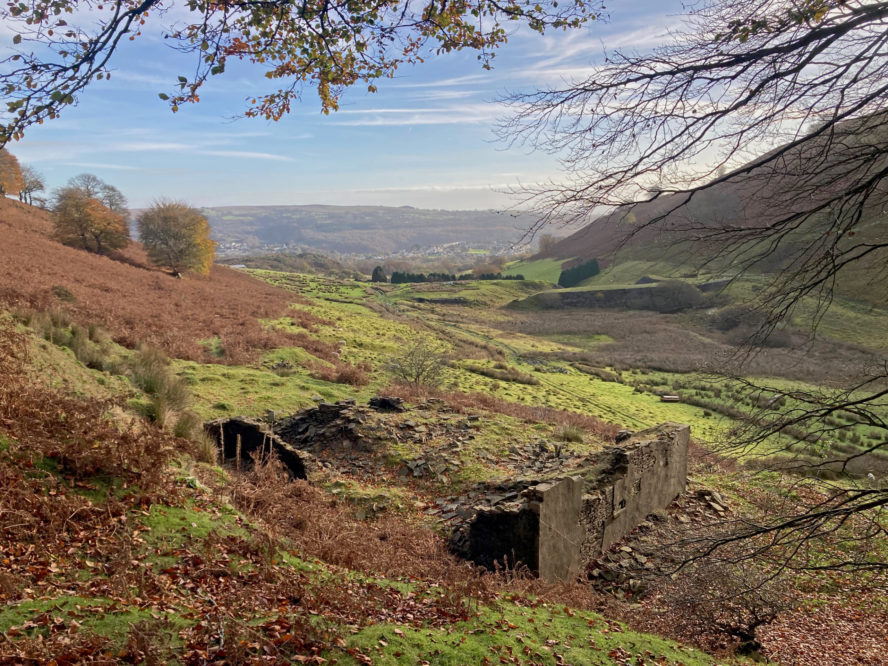
In a year long series Tom Maloney, from Abersychan, shows how you can love a place so well it becomes a part of you.
Abersychan has had its fair share of heavy industrial use in the past for sure, but these days you might say it is a sleepy little village in a semi-rural location.
It derives its name from the Cwmsychan Brook and one of the best places to see this lovely babbling stream is at the very top of Cwmsychan far away from the sounds of everyday life.
In a way the name Cwmsychan is a bit of a conundrum. ‘Cwm’ is straight forward enough, meaning ‘valley’ in English, but ‘sychan’ translates as ‘dry’ and I have often wondered about the use of the word within its name because the valley was used to create a reservoir for the British Ironworks in Abersychan. A dry valley seems to be a very unusual choice for such a purpose!
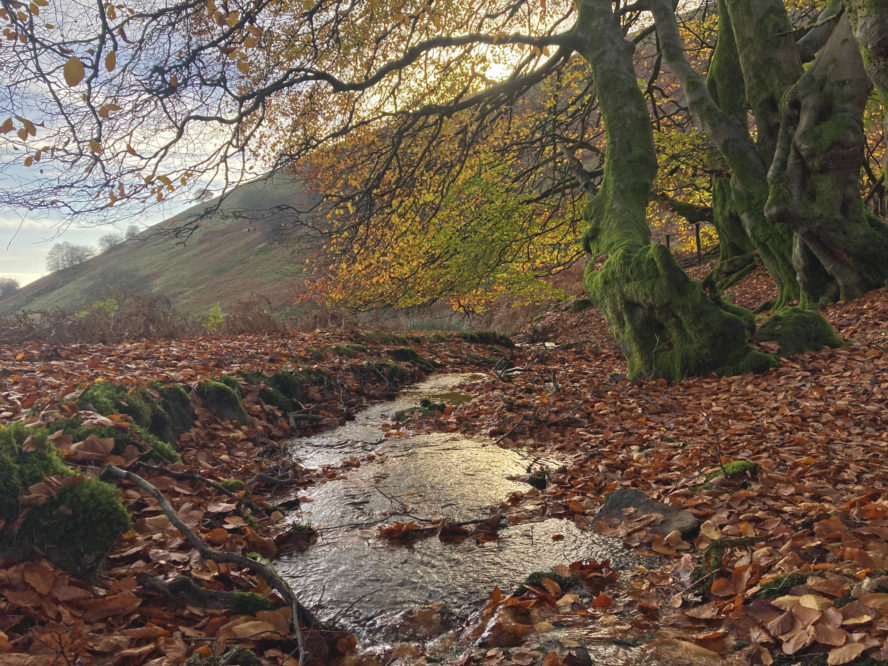
But … I absolutely relish the opportunity of walking in this neck of the woods and how lovely it has been to see the return of bright, sunny days. It gladdens your heart, puts a spring in your step and has been just perfect weather for several walks at Cwmsychan over the course of the week.
There is a richness about this landscape where you can feast on fine views and enjoy the fresh, earthy and sometimes ‘fruity’ aromas of the countryside, though I would hazard a guess these scents are not to everyone’s liking, but for me they are all a part of the enjoyment.
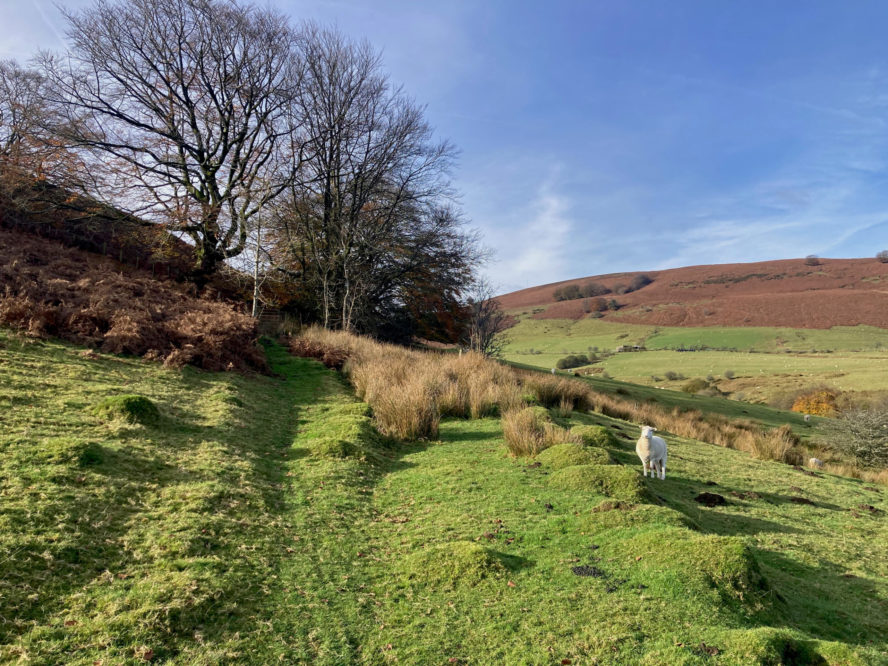
Hill walking is at its best when there is so much to take in and where there are opportunities to stop and reflect upon the things that you see and where everything unfolds in stages.
Cwmsychan is like this. I favour a path that cuts across from Cwm Byrgwm and follows the slope of the valley. I wouldn’t say it is ‘twisty’, but it has enough bends to keep you wondering about what you will see ahead and has idyllic sheltered areas where avenues of trees can give protection if the weather turns.
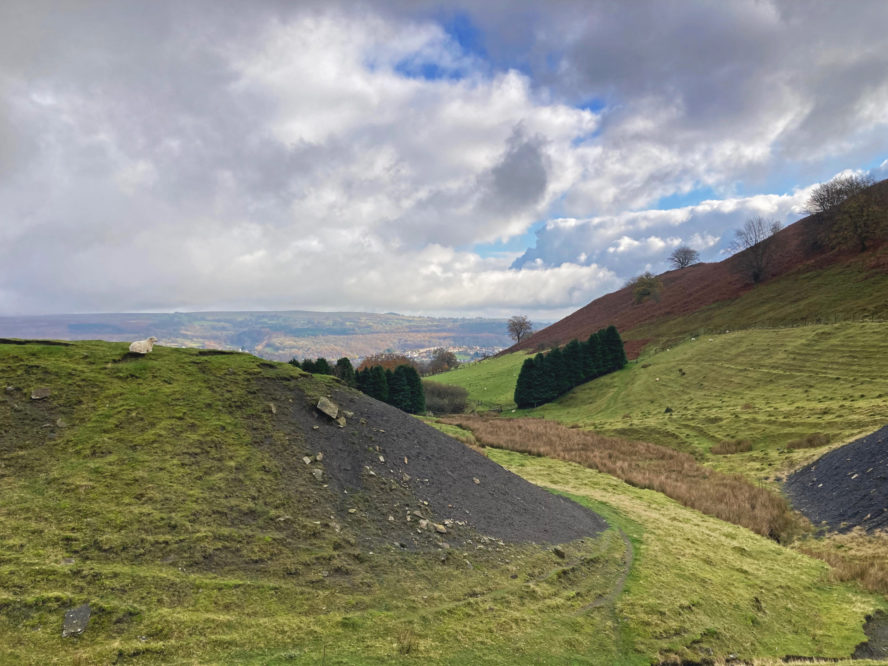
A sheep at rest on a ridge of colliery spoil that stretches out into the valley like a subterranean monster surfacing above the earth
It is an extraordinary place, where Sheep do very well and thrive on what the slopes have to offer. Farming and coal mining have gone hand in hand here and the reminders are still much in evidence.
Colliery spoil like huge subterranean monsters stretch out from the valley sides, seemingly incongruous now, but old maps reveal several drift mines were cut into the hillside. Nature has softened the disturbance of the earth over time, but there is still some healing to go.
Nevertheless, it is surprising what you see growing amongst the grass and moss blanketing the coal tips. This time of the year there are plenty of opportunities to spot fungi and though I am very much a beginner when it comes to identification, I am fairly confident of seeing little yellow waxcaps shining back at me. From what I have read, they would seem to flourish where the soil is poor in nutrients, which would make a lot of sense.
I feel I should stress though, that I make it a point to only look at fungi growing in the wild and follow all the advice not to handle or eat them.

Above the winding Cwmsychan Brook, sits the ruins of Ty-cwmsychan Farm. In the Welsh ‘Ty’ means ‘House’ and this was indeed a big house on the hill and would have supported a large family.
Derelict and abandoned it may be, but there is still an unmistakable air of grandeur about its broken walls and much that can be learned about living in such a remote location.

Even now, the approach to the house is quite special. Dry stone walls and buttresses reveal it was constructed in a stepped fashion, perhaps even with several terraces.
On the side of one wall, that I assume would have been a gable end, I noticed that a window had been blocked with an infill of stone matching the structure. I wondered if this had been enforced by howling wind and rain, making it hard to maintain the wooden frame of a window. I can easily imagine that the good folk living so high up within these four walls would have endured harsher winters than the people of the valley below. It is the same today!

Just a little way away from the house, there is another little house ‘the pigsty’ or ’twlc Mochyn’ in the Welsh. Not that long ago, keeping pigs was common place. I know that my grandparents kept pigs and that the house I live in now once had a pigsty. I am guessing that a few chickens roamed free as well.
From time to time, I have my lunch here and imagine the life of the farm. Washing on the line, the smell of a wood fire, cows in the shed, snorting pigs, clucking chickens, barking dogs and perhaps a shout or two as well!
It’s all in the whispers of the wind, if you let it talk to you, but then I may just be letting my imagination get the better of me!
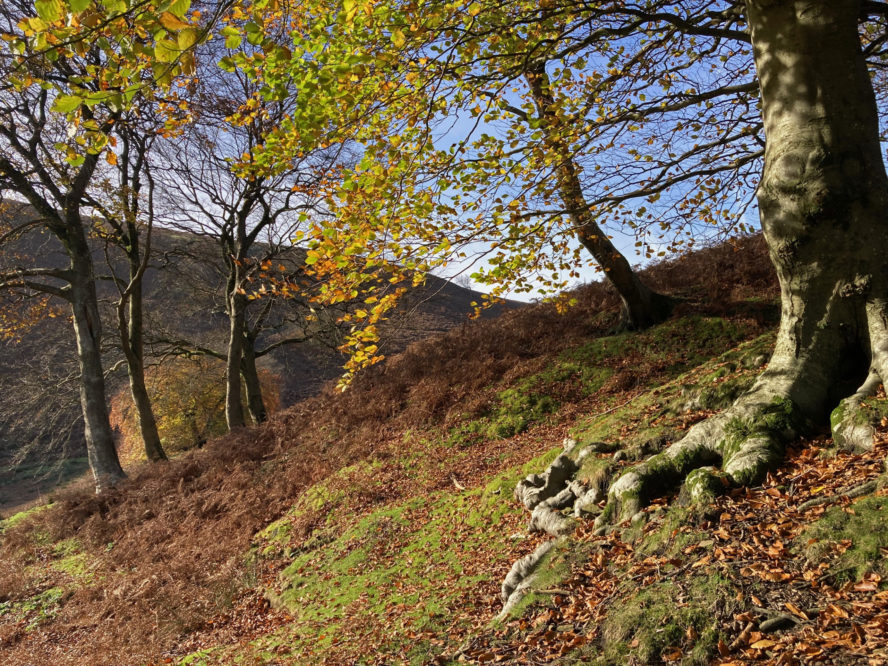
What makes this such a beautiful place, even today, are the trees. Up close they seem like giants with their bulbous, coiling roots exposed above the surface of the slope and with such autumn colours they are a delight.
On every walk this week a little memory has kept recurring in my thoughts.
I remember, they used to say ‘that there was no such thing as a poor farmer!’
Perhaps the saying was to do with market day, which was once a big event in towns like Abergavenny, when every farmer it seemed came to town to buy and sell. It may have appeared that farmers were people of rich means and for some it may have been so.
But as I think about this phrase today, I don’t believe this was a fair reflection. The ruins at Ty-cwmsychan are a huge reminder of just how hard it was to make a farm a successful business and how difficult it was to make ends meet. I am aware that some farmers even supplemented their income with wages from nearby collieries.
Ty-cwmsychan is not the only derelict farm to be seen hereabouts, just along the ridge there is the curiously named ‘New Foundout Farm’. a name that I would more readily associate with a tavern or public house. Perhaps, like Graigdu farm in the next valley along it may also have been a beer house.
Seen from below it does not look that big a structure at all, but when you see it close up this was another farm of generous proportions with at least one substantial outbuilding, that may possibly have been a barn.
Sadly, it is just another ruin in the landscape today and there plenty of others in the area as well.
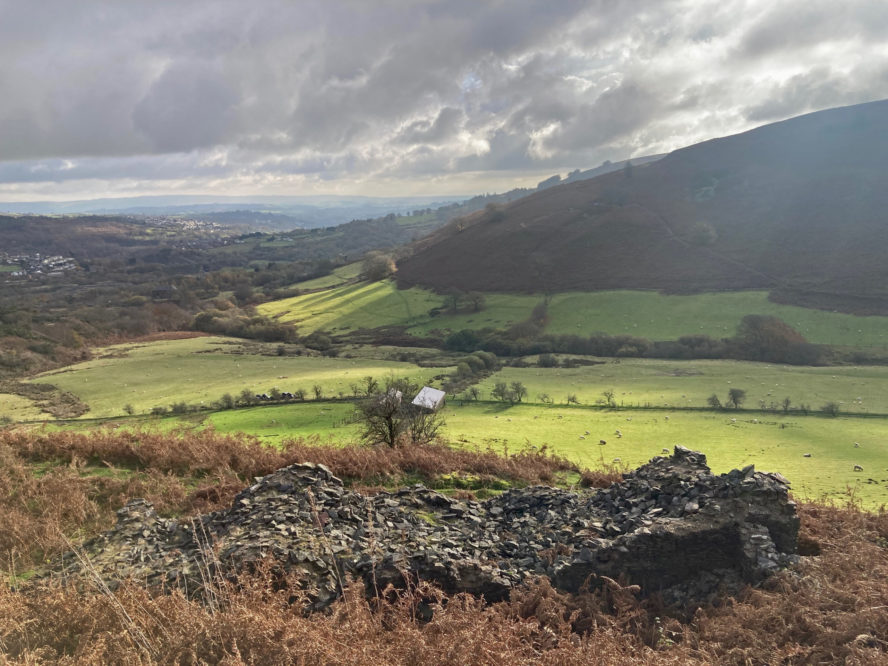
Occasionally I bump into one or two of the local farmers as they go about their business, and to say that they work hard is a massive understatement.
Sheep farming is exhausting and does not fit neatly into normal working hours, it makes demands on you night and day and takes you into difficult terrain in the darkness.
The story of industry within the area is well known, but I rather suspect that the story of farming has gone under the radar and perhaps still does. There is a big story about farming that has yet to be told.
You can find out more about Cwmsychan Reservoir here.
Support our Nation today
For the price of a cup of coffee a month you can help us create an independent, not-for-profit, national news service for the people of Wales, by the people of Wales.




